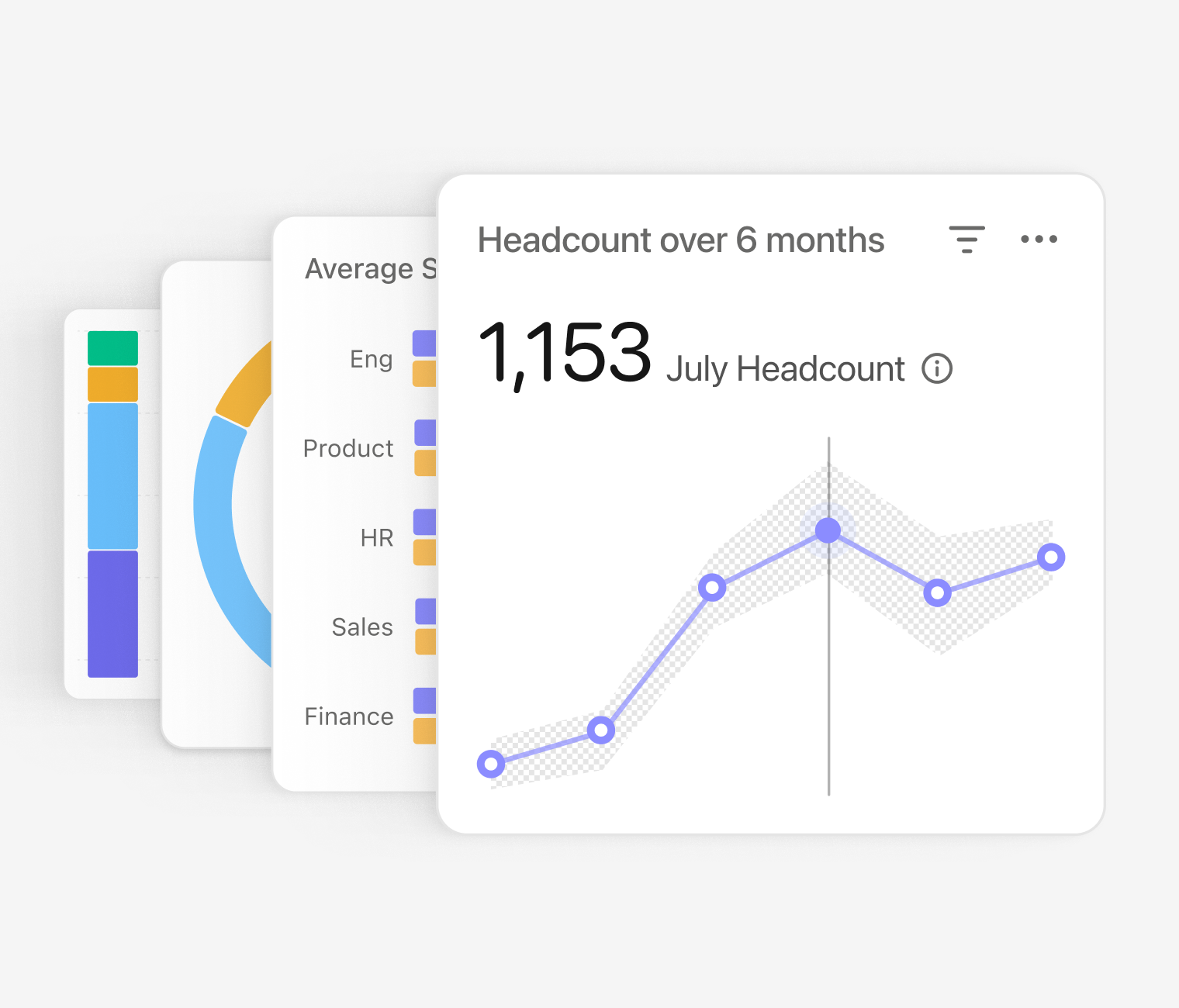
Turn data into strategic insights.
Enable proactive decision-making with People Analytics.
Create reports in secondsLatest Blog Posts
Occupational Health: Assessments, Improvements, and Best Practices

Does your organization need to implement an occupational health program? In this article, we offer the basics behind occupational health, what goes into a proper assessment, and even more. Moreover, what role does technology play in all of us? Read on to hear the whole story!
Contents
- 1What is Occupational Health?
- 2What Is An Occupational Health Assessment?
- 3What Does UK Law Say About Occupational Health?
- 4Do Companies Have To Have An Occupational Health Program?
- 5What Occupational Health Services Do Companies Typically Offer?
- 6How Can Companies Help Improve Employee Health?
- 7How Can Technology Help Improve Occupational Health?
- 8Making Occupational Health A Priority
What is Occupational Health?
Occupational health can be broadly understood as keeping people safe at work. Essentially, it is about preventing and treating job-related injuries or illnesses. In recent years, though, the focus has shifted to an emphasis on overall wellbeing at work — not simply physical injuries, but both physical and mental health (and the role workplaces play).
Is Occupational Health A Good Thing?
Occupational health is designed to ensure that employees feel good at work. Not just physically, but in the sense of wellbeing, too. It helps to manage risks for employees, which also offsets risks for employers when it comes to lost productivity. Essentially, everyone feels well, and everyone benefits.
Why are Occupational Health Services Important?
Occupational health services, like those provided by the NHS can help with health promotion and wellbeing, workplace immunizations, health surveillance and prevention, risk assessments, rehabilitation, and absence management – just to name a few.
It’s important that employers take these seriously because good occupational has a number of benefits, including:
Lower levels of absenteeism
Improved staff morale and motivation
Increased productivity and
Fewer injuries.
Research has even found a link between stock market price growth and having a great employee wellness program.
How Do the NHS and WHO Define Things?
While the NHS Health at Work Network says that it is the role of occupational health services to "keep your employees healthy and safe whilst in work and manage any risks in the workplace that are likely to give rise to work-related ill health."
The World Health Organisation (WHO)’s definition, on the other hand, focuses more on “disease from major occupational risks, such as injuries, airborne exposures, carcinogens, ergonomic stressors, noise, and other specific risks.”
According to the WHO, “It is estimated that 2.1% of all deaths and 2.7% of the disease burden worldwide can be attributed to quantified occupational risks.”
In European countries, however, we are much more fortunate. Yes, over 170 million days are lost to sickness absence every year with an estimated cost to the economy of £100bn, according to NHS Health at Work, but citizens in developed nations are far less likely to suffer from the dangers and diseases that plague workers in other countries.
Does that mean occupational health should be taken less seriously in the UK and Europe than elsewhere, though? Absolutely not.
Enable Data-Led Decisions

Collect and organise important HR insights such as absences, attrition, and more. Generate detailed reports in seconds so you can strategise with confidence.
Unlock detailed HR analyticsWhat Is An Occupational Health Assessment?
You can think of an occupational health assessment as something of a test. Carried out by an Occupational Health Physician, this kind of assessment is designed to advise employers on how to make their workplace safer for employees. They will often make key recommendations that organizations can see through to make improvements.
A number of different types of occupational health assessments exist, including:
Pre-employment health assessments
Fitness for work assessments
Job-specific assessments
Mental health assessments
What Does UK Law Say About Occupational Health?
As an employer, you aren’t legally required to provide occupational health services to your employees in the UK. But you do have to look after your employees’ health at work. It’s the law. Here’s what the HSE says on their ‘planning for health and safety’ web page.
Here’s The Law…
Under the Health and Safety at Work etc Act 1974 (the HSW Act), you have to ensure, so far as is reasonably practicable , the health and safety of yourself and others who may be affected by what you do or do not do. It applies to all work activities and premises and everyone at work has responsibilities under it, including the self-employed.
Employees must take care of their own health and safety and that of others who may be affected by their actions at work. They must also co-operate with employers and co-workers to help everyone meet their legal requirements.
The Management of Health and Safety at Work Regulations 1999 also apply to every work activity and workplace and require all risks to be assessed and, where necessary, controlled.
Do Companies Have To Have An Occupational Health Program?
Employers do have to follow certain guidelines, but you may not need to have a specific ‘occupational health program’ in place. That is up to an employer, but there are some key things to keep in mind that are legally required…
According to the HSE, “As an employer, you’re required by law to protect your employees, and others, from harm.”
This is often referred to as ‘health and safety’ in the UK, although other countries may use the term occupational health. To manage health and safety effectively you need to look after your organization, your workers, and your workplace. The HSE continues to say that “Managing health and safety is an integral part of managing your business.”
In addition, Worksmart says that employers do not have to provide an occupational health service as it’s up to you what health services you offer your staff and how. In fact, less than 1/7 small or medium-sized companies provide occupational health facilities – but the NHS Health at Work service is there to help everyone.
What Occupational Health Services Do Companies Typically Offer?
Some companies may choose to have a workplace occupational health service. This service allows employees to visit a company doctor and/or nurse, with specialist training, completely on-site.
This is not mandatory, though, and will typically on:
Your company’s size
The needs of your workers
The affordability of employing a health professional
Your attitude to employee health
How Can Companies Help Improve Employee Health?
In today’s knowledge-based economy many workers are predominantly office-based or desk-bound. As we covered in the blog post on work-life balance, keeping people healthy, productive, and motivated means requiring them to take care of themselves, as well as helping them balance their work.
Some ways in which companies can encourage to improve office workers’ occupational health include very basic activities like:
Sitting properly at a comfortable desk that is adapted for their physiology
Taking regular breaks, including micro-breaks and stretching their muscles
Getting outside, into the fresh air, and doing exercise every day.
How Can Technology Help Improve Occupational Health?
Technology can help companies improve their employees’ occupational health too: from offering EAPs and telemedicine to funding fitness trackers or even using technology to help them do their jobs better.
For example, while telemedicine is not yet commonplace in Europe or the UK, Forbes reports that digital technologies like fitness trackers have been shown to improve individuals’ health and their productivity, due to a decreased rate of workplace absences.
Today many employee assistance programs are being offered remotely as well – through phone calls and over the internet.
Other technology can make employees’ lives easier – whether that is by making their jobs less frustrating or by helping them do more value-added tasks.
For example, the use of HR technology reduces manual data input and frustrating admin activities related to recruiting, hiring, documenting and retaining employees. As a result, it gives HR people more time to do the jobs they love: helping people get more out of their work.
Making Occupational Health A Priority
In challenging times, we know that ‘normal’ is relative. However, as employees adjust to a new normal, ensuring employees’ occupational health is looked after shouldn’t just fall to HR leaders. Senior management has a responsibility to take care of employees’ physical and mental health and so do employees themselves!

